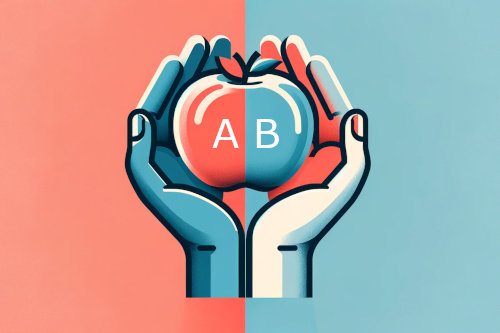In today’s competitive business landscape, success hinges on making informed decisions that drive results. A/B testing, also known as split testing, is a powerful technique used by businesses to optimize their marketing efforts, website performance, and product offerings. By systematically comparing two or more variations of a marketing asset or webpage, businesses can identify which version performs better and make data-driven decisions to maximize their success.

In this article, we’ll explore the fundamentals of A/B testing and share strategies for implementing it effectively in your business.
Understanding A/B Testing
At its core, A/B testing involves comparing two or more variations of a marketing asset or webpage to determine which one performs better in achieving a specific goal, such as increasing conversions, click-through rates, or engagement. The variations, often referred to as the control (A) and the treatment (B), are presented to users randomly, and their performance is measured based on predefined key performance indicators (KPIs).
For example, an e-commerce business may create two different versions of a product page—one with a green “Buy Now” button and another with a red “Buy Now” button—and measure which version generates more clicks and purchases. By collecting and analyzing data on user behavior, businesses can gain valuable insights into what resonates with their audience and optimize their marketing efforts accordingly.
Moreover, A/B testing can be applied across various touchpoints in the customer journey, from email marketing campaigns and website design to product features and pricing strategies. By continuously experimenting with different variables and measuring their impact, businesses can refine their strategies and enhance their overall performance.
Implementing A/B Testing in Your Business
To effectively implement A/B testing in your business, follow these key strategies:
1. Define Clear Objectives
Before launching an A/B test, clearly define your objectives and what you hope to achieve. Whether it’s increasing conversion rates, improving email open rates, or enhancing user engagement, having clearly defined goals will guide your testing strategy and help you measure success accurately.
2. Identify Variables to Test
Identify the elements of your marketing asset or webpage that you want to test. This could include headlines, call-to-action buttons, images, layout, or pricing. Focus on variables that are likely to have a significant impact on your KPIs and prioritize testing one element at a time to isolate the effects of each change.
3. Create Variations
Create multiple variations of your marketing asset or webpage, each with a single variable changed from the original version. Ensure that your variations are distinct enough to produce meaningful differences in user behavior, but avoid making too many changes at once, as this can muddy the results.
4. Conduct the Test
Randomly assign users to each variation and monitor their interactions with the content. Depending on the volume of traffic and the duration of the test, you may need to run the test for a predetermined period to gather statistically significant results. Use A/B testing tools and software to streamline the process and track performance metrics accurately.
5. Analyze Results and Iterate
Once the test is complete, analyze the results to determine which variation performed best against your predefined KPIs. Take into account statistical significance, confidence intervals, and any other relevant factors to ensure the validity of your findings. Use the insights gained from the test to inform future iterations and continuously optimize your marketing efforts.
Conclusion
A/B testing is a powerful tool for optimizing success in business. By systematically comparing variations of marketing assets and webpages, businesses can make data-driven decisions that drive results and maximize their impact. By defining clear objectives, identifying variables to test, creating variations, conducting tests, and analyzing results, businesses can harness the power of A/B testing to continuously improve and refine their marketing strategies.
Embrace A/B testing as a fundamental component of your business toolkit, and watch as it propels your success to new heights.


